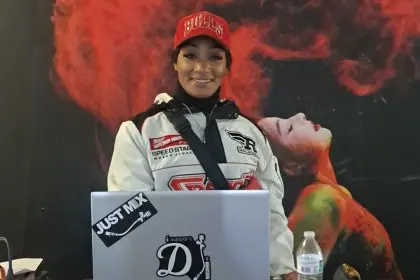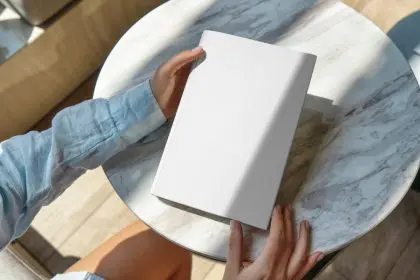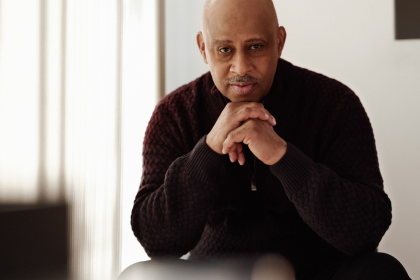In an exclusive interview with rolling out, Sydney Lynne, the scenic designer for August Wilson’s play How I Learned What I Learned, shares her journey into scenic design. Lynne discusses her passion for transforming everyday spaces into magical environments and reveals her inspirations and challenges in bringing Wilson’s narratives to life on stage.
Talk about your journey into scenic design.
So scenic design is a real passion for me because I really just like creating spaces and environments that are really activated, really magical, and take us out of our everyday life, and bring us into a space that has more awe, more overall energy. Our ability and our capacity to imagine spaces is one of the greater things I think we can do as creatives. So me being able to do that as my life work, I think, is really exciting, and that’s pretty much how I got into it. I’m a visual artist first, so I just kind of let it flow from there.
What was your main source of inspiration for this production?
So for this production, we’re looking at August Wilson’s life. It’s being told through this narrator that we know to be August Wilson. And as he’s laying out each element of his life, he kind of frames it in chapters. So I’m thinking, books, chapters, pages. A writer leads us to a lot of particular imagery, and the typewriter was something that we landed on. So as we’re walking around the space, I’m looking at a typewriter, and I’m like, what would happen if we turn this typewriter upside down. So I turn the typewriter upside down, and when you turn the typewriter upside down, you kind of get this industrial factory looking space where the keys become these kind of overhead-looking lights and the structure of the typewriter looks like it kind of has the industrial feel of maybe a Pittsburgh steel factory has. August Wilson particularly has landed most of his plays in this 10-series cycle in this Pittsburgh environment. What a great place to land this kind of writer’s lair where he’s unfolding his story in this upside-down typewriter. That’s also this factory space where it all comes to life.
How did you prepare for this?
I think there’s like a lot of different elements that come with scenic design that you don’t otherwise know just by looking at it. But first, it’s like coming up with the concept, what are we trying to establish? What is the creative space in which the story lands? Then it’s like, OK, how do we communicate how to build this? So you have to create architectural drawings. What does the paint on all of these architectural drawings look like? So you create paint renderings. And then you’re like, OK, well, he needs a chair to sit in. What does that chair look like? And so every single element of developing the space has its own little step. So it’s like the concept, the architectural drawings, the paint. And then it’s like the set dressing which is like the props, the furniture, and all the little minutia and details you see on stage to make it feel lived in.
What do you hope audiences take away from your work in this particular production?
I think that with this particular production it’s just really important for people to understand that we have whole lives that we’ve lived, and whole stories that we are personally telling. All of the pieces of ephemera, all of the things we hold onto, all of the ways we decorate our spaces, everything we’ve read that all like comes together to tell the story of our lives.
How I Learned What I Learned is playing at Broadway Playhouse at Water Tower Place in Chicago from April 20 to May 5, get tickets here.













